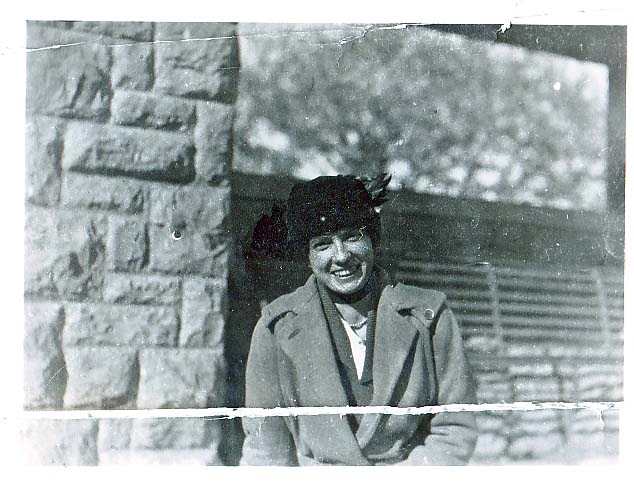In February of 1920, Edna Wright filed her bill of complaint with the Staunton chancery court requesting a divorce from Frank W. Wright. Edna stated that for the last 18 months her husband had been infatuated with a married woman named Mabel Duffey. The previous year, Mr. Duffey had caught Frank in Mabel’s bedroom; at the time, both admitted to the charge of “criminal intimacy” or adultery. Edna agreed to take her husband back after he promised to cease his activities with Mabel. However, the lure of Mabel as forbidden fruit was apparently just too strong.
At some point between being caught in the act and Edna’s filing for divorce, Frank “appears to have cast aside all restraint in regard to his marital obligations and to have abandoned himself to a sexual desire for said Mrs. Duffey and makes no denial and makes no excuse for his connection with her.” At this point Edna played her trump card: she had written and photographic evidence.
The deposition of Staunton police chief S. B. Holt relates the tale of how Edna came to him and showed him letters that she had found in her husband’s overcoat pocket, proving that he and Mabel were still in contact. Furthermore, she had found photographs of them together. From what Mr. Holt recalled of the letters, one from Mabel to Frank explained how to get into her house at night without making any noise. When confronted with the letters by both his wife and Mr. Holt, Frank did not deny that he and Mabel were still communicating or that he was being unfaithful. A section of Edna’s deposition describes one of her exchanges with her husband on the subject:
Q: Will you please state whether or not you have recently charged him with being too intimate with Mrs. Duffey and, if so, what was his reply and his attitude in the matter? I refer to the time when he told you that he did love her?
A: Well, that was—I could not tell the exact date, but it has been since Christmas, Mr. Braxton [Mrs. Wright’s lawyer]; in January or, I think, the first of February.
Q: Just what took place at that time, Mrs. Wright?
A: Well, he told me he did love the woman and I said, “Well, why don’t you go and live with her? Why don’t you stay with her?” He said, “I would if I could.”
None of the letters remain with the suit papers, but the photographs do, depicting two of the most clothed adulterers you have ever seen. Mabel is wearing a long skirt, tall boots, a long coat, gloves, and a beret-style hat. Frank is wearing a suit. In all of them, the illicit pair is either smooching or hugging with huge grins on their faces. The photographs are hardly the images that might spring to the modern mind when the phrases “criminal intimacy” or, more contemporaneously, “totally busted” are used, but along with the testimony of Chief Holt and Edna herself, they were enough for Edna to win her case and a full divorce from her husband in March 1920.
What happened then to our careless Mr. Wright? The 1930 census of Washington, D.C., shows him living on Hamlin St. NE with wife Mabel–clearly Mrs. Duffey’s extramarital shenanigans also had consequences for her first marriage. The original Mrs. Wright had also relocated to Washington where she ran a rooming house on 15th St. NW.
For the full case, please see Staunton City Chancery Causes 1924-002, Edna V. Wright vs. Frank W. Wright.












I am curious if the Lynchburg City Chancery cases will be published within the next year?
Ms. Swart,
The pre-1913 Lynchburg chancery causes will not be digitized within the next year. This collection consists of nearly 650 boxes and is a large project to undertake. Further, additional chancery causes were recently identified and are currently being flat-filed, indexed, and conserved. Those cases will be added to the existing materials upon their completion.
Future funding and priorities will help determine our digital reformatting schedule. However, the original records are available for research in the Library’s Archives Reading Room.